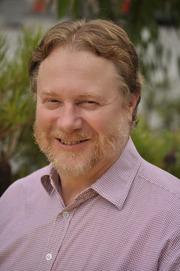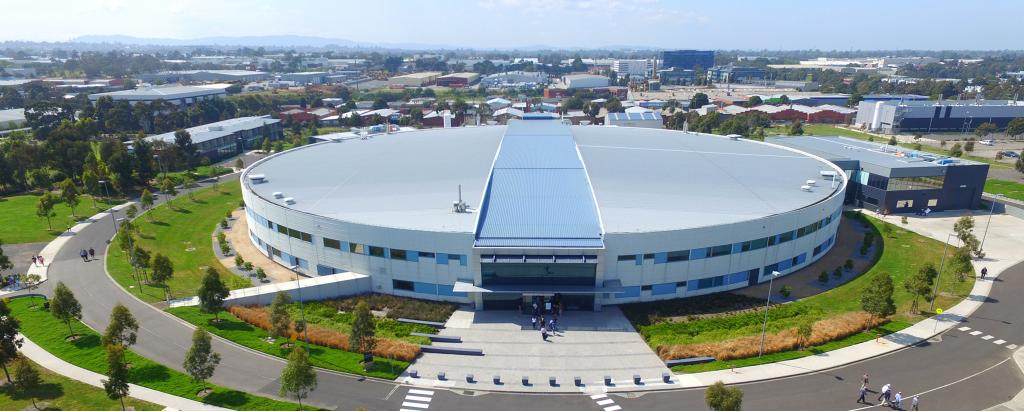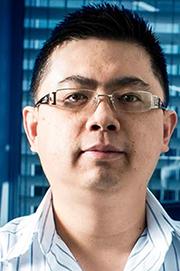

Published on the 10th November 2020 by ANSTO Staff
Professor Peter Lay from the University of Sydney has been awarded the Australian Synchrotron Lifetime Contribution Award by ANSTO, the Australian Nuclear Science and Technology Organisation.
Peter Lay from the University of Sydney

The Australian Synchrotron Research Award for early career researchers has been awarded to Dr Wei Kong Pang from the University of Wollongong.
Dr Wei Kong Pang from the University of Wollongong

The Lifetime Contribution award is granted every two years, judged by the Australian Synchrotron User Community, in recognition of outstanding contributions to synchrotron science in Australia.
Peter Lay is a Professor of Inorganic Chemistry in the School of Chemistry and Director of Sydney Analytical, a Core Research Facility at the University of Sydney, which has extensive links with ANSTO through the Australian Synchrotron and the Lucas Heights campus.
He uses X-ray absorption spectroscopy, X-ray fluorescence microscopy and infrared microscopy to study changes in the biodistribution and concentrations of elements and biochemicals in cells and tissues as a result of disease processes and their treatment with drugs.
Professor Lay said: “I feel very privileged to receive this award for my involvement in the development of Australian synchrotron science in Australia and overseas. This has been made possible through generous programs of the Australian Synchrotron and, previously, the Australian Synchrotron Research Program.
“Continued support from the Australian Research Council through LIEF [Linkage Infrastructure, Equipment and Facilities] grants and Discovery grants have also been invaluable in enabling this cutting-edge synchrotron science.
“I would like to thank my many mentors and collaborators over the past three decades, in particular, Dr Aviva Levina, who has been involved as a collaborator in most of these studies.”
Director of the Australian Synchrotron, Professor Andrew Peele, said that Professor Lay had harnessed the power of synchrotron techniques to gain insights at the nanoscale to benefit human health.
“His contribution has been exceptional over many years and he is recognised internationally as a pioneer in using spectroscopic techniques to study anti-cancer and anti-diabetic drugs,” he said.
The Australian Synchrotron is a world-class research facility in Melbourne used by more than 5000 scientists a year. By accelerating electrons at the speed of light around its 216-metre circumference, the synchrotron produces intense beams of light more than a million times brighter than the sun.
These beams are used via experimental facilities to examine the molecular and atomic details of a wide range of materials. Advanced techniques are applied to research in many important areas including health and medical, food, environment, biotechnology, nanotechnology, energy, mining, agriculture, advanced materials and cultural heritage.
The Australian Synchrotron Research Award is given every year to an emerging leader in synchrotron research with less than 10 years of post-PhD experience.
Dr Pang is an ARC Future Fellow and Senior Research Fellow at the Institute for Superconducting and Electronic Materials (ISEM) at the University of Wollongong.
His research focuses on understanding and developing rechargeable metal-ion battery technologies, including the atomic-scale characterisation of electrode materials.
“I am excited to receive the Australian Synchrotron Research Award for my work. I would not have been able to achieve this recognition without the great support of ANSTO, ISEM and UOW. For me, the award is a reward for work well done, and encouragement for doing more,” Dr Pang said.
“Mechanistic studies offer an in-depth understanding of battery materials, with the application of synchrotron techniques playing an important role and allowing rational improvement, stimulating the development of next-generation energy storage.”
Prof Peele said that Dr Pang he had made significant advances in understanding the relationship of structure to chemistry in metal ion battery technologies using a variety of X-ray scattering methods and other techniques.
“I am absolutely delighted that we were able to recognise Dr Pang for his outstanding work using our powder diffraction beamline. We are all aware of the enormous potential of metal-ion batteries and Dr Pang has been a powerhouse in this area,” Professor Peele said.
The awards will be formally presented to both recipients at the Australian Synchrotron User Meeting 2020 on 20 November. Professor Lay will deliver an acceptance address at the meeting.
For media enquires:
ANSTO:
University of Sydney
Vivienne Reiner | vivienne.reiner@sydney.edu.au | +61 447 727 024
University of Wollongong
Benjamin Long | benl@uow.edu.au +61 2 4221 3887 | +61 429 294 251